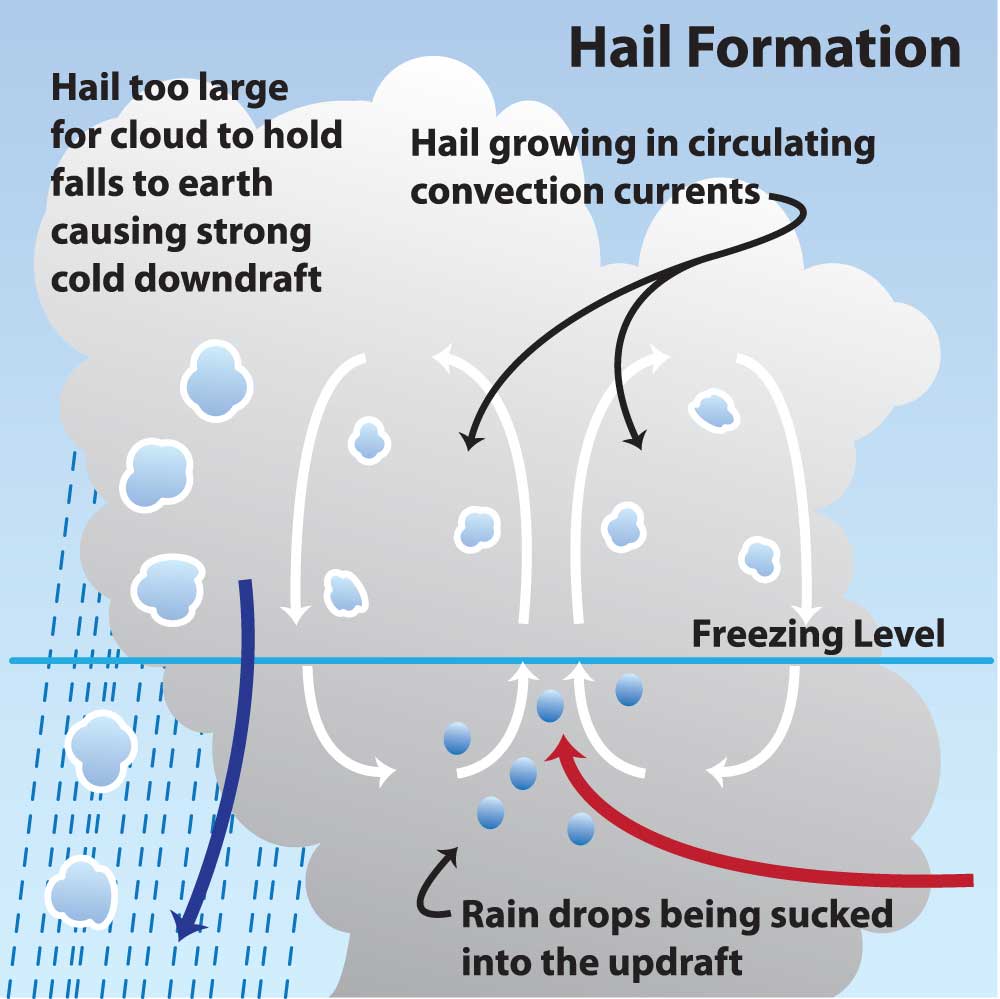On Wednesday Oklahoma and parts of northern Texas were bracing for severe thunderstorms that could be capable of producing large hail. Oklahomans and Texans are no strangers to hail the size of golf balls or larger during the severe events. Needless to say they know some creative way to protect their vehicles. The NBC station in Dallas shared a number of photos of things from bubble wrap to towels and sleeping bags to pool noodles covering the windows and roof of cars and trucks. My favorite was the unicorn pool float used to cover the rear windshield.
Unicorn pool float 🦄 More pics: https://t.co/WDRbiECgdJ #NBCDFWWeather pic.twitter.com/Bw5MfkshuH
— NBCDFW Weather (@NBCDFWWeather) April 18, 2019
Hail is a form of precipitation that occurs when updrafts, or the upward moving winds, inside thunderstorms raindrops into the extremely cold part of the cloud where they can freeze into balls of ice. Hailstones grow by colliding with supercooled water drops. Supercooled water will freeze on contact with ice crystals, dust, or other particles in the clouds.

Thunderstorms that have strong upward are capable of growing hailstones. The size of a hailstone comes down to the strength of that updraft. As hailstones fall through the updraft the edges melt, then as it’s send back to cold part of the cloud it collides with more supercooled water drops and continues to grow. The hail will fall when the thunderstorms’ updraft can no longer support its weight or the updraft weakens.

You can think of hailstone like the layers of an onion. The number of layers of the piece of ice will tell you the number of times the hail cycled through the updraft.

